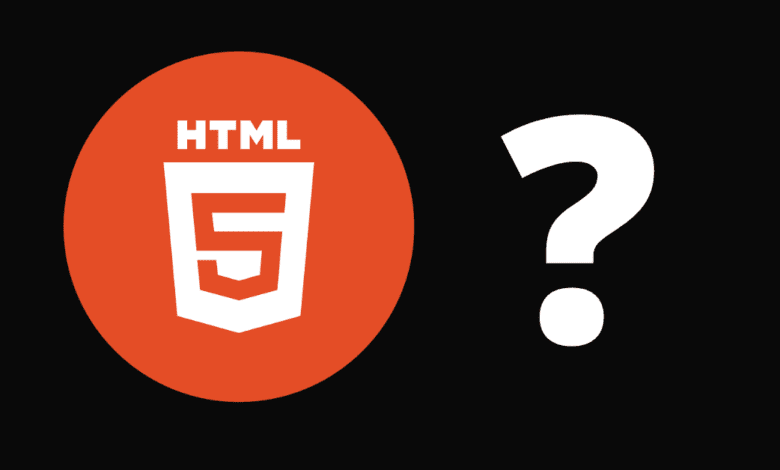Explain the difference between HTML and HTML5.
HTML and HTML5.

1. Introduction to HTML and HTML5: A Brief Overview
In the world of web development, HTML and HTML5 play pivotal roles. These coding languages are the foundation of web design and functionality, bringing to life everything that we see and interact with online. This section provides a broad understanding of HTML’s history and the birth of its modern variant, HTML5.
2. Understanding the Basics of HTML: A Closer Look
In our journey to learning HTML, it’s necessary to comprehend common HTML elements and their functions. From tags to attributes to elements, your understanding of HTML’s key terminologies and their application is crucial for proficient web development. This part takes a deeper dive into the intricate elements of HTML, providing aspiring developers with the knowledge needed to begin crafting their websites.
3. Explore the Enhanced Capabilities of HTML5: Moving Beyond HTML
HTML5’s arrival in 2014 brought along an array of sophisticated tools for developers to leverage, allowing them to design more engaging and interactive websites. Here, we will unravel HTML5’s new features, its enhanced capabilities, and demystify how it is transforming the web development landscape, moving us beyond the limitations of classic HTML.
4. A Comprehensive Comparison: HTML vs. HTML5
Understanding the key differences between HTML and HTML5 can help you choose the right tool for your next web development project. This segment looks into how HTML5 holds an edge over HTML in terms of multimedia support, graphic content, and mobile compatibility. Thus, giving you an overview of the progress from HTML to HTML5.
HTML (HyperText Markup Language) and HTML5 are both markup languages used to create and structure content on the web. However, HTML5 is an upgraded version of HTML with enhanced features and capabilities. Here’s a detailed comparison of the two:
HTML
1. Introduction:
– HTML is the standard markup language used for creating web pages.
– Developed in 1991 by Tim Berners-Lee.
2. Basic Features:
– Uses a set of predefined tags to structure web content.
– Tags like `<html>`, `<head>`, `<body>`, `<p>`, `<a>`, `<img>`, etc.
3. Multimedia Support:
– Limited support for multimedia elements.
– Requires external plugins like Flash to embed audio and video.
4. Form Elements:
– Basic form elements like `<input>`, `<textarea>`, `<select>`, etc.
– Limited input types and attributes.
5. Semantic Elements:
– Lack of semantic tags, making it harder to understand the structure and purpose of web content.
6. Doctype Declaration:
– Complex and lengthy doctype declaration: `<!DOCTYPE HTML PUBLIC “-//W3C//DTD HTML 4.01 Transitional//EN” “http://www.w3.org/TR/html4/loose.dtd”>`.
7. Browser Compatibility:
– HTML4 requires more hacks and workarounds for cross-browser compatibility.
HTML5
1. Introduction:
– HTML5 is the latest version of HTML, developed to address limitations and introduce new features.
– First released in 2014 by the World Wide Web Consortium (W3C) and the Web Hypertext Application Technology Working Group (WHATWG).
2. Enhanced Features:
– Provides new elements and attributes that offer more flexibility and functionality.
– Supports modern web development practices.
3. Multimedia Support:
– Native support for audio and video elements with `<audio>` and `<video>` tags.
– No need for external plugins.
4. Form Elements:
– Enhanced form elements with new input types like `email`, `date`, `number`, `range`, `color`, etc.
– New attributes like `placeholder`, `required`, `autofocus`, `pattern`, etc.
5. Semantic Elements:
– Introduces semantic tags such as `<header>`, `<footer>`, `<article>`, `<section>`, `<nav>`, `<figure>`, `<figcaption>`, etc.
– Improves readability and accessibility of web content.
6. Doctype Declaration:
– Simplified doctype declaration: `<!DOCTYPE html>`.
7. Browser Compatibility:
– Modern browsers are built to support HTML5, reducing the need for hacks and workarounds.
– Graceful degradation and polyfills can be used for older browsers.
8. APIs and Additional Features:
– New APIs for better web application functionality, such as:
– Canvas API: For drawing graphics on the fly via JavaScript.
– Geolocation API: To get the geographical position of a user.
– Local Storage: For storing data on the client side.
– Web Workers: For running scripts in the background.
– WebSockets: For real-time communication between the client and server.
– Drag and Drop API: For implementing drag-and-drop features.
Summary
HTML:
– The original markup language for creating web pages.
– Limited multimedia support.
– Basic form and non-semantic elements.
– Longer doctype declaration.
HTML5:
– An enhanced version of HTML with modern web development features.
– Native support for audio and video.
– Improved form elements and attributes.
– Semantic elements for better structure and accessibility.
– Simplified doctype declaration.
– Support for new APIs and browser compatibility.
HTML5 represents a significant advancement in web development, providing developers with more tools to create dynamic, interactive, and accessible web content.




